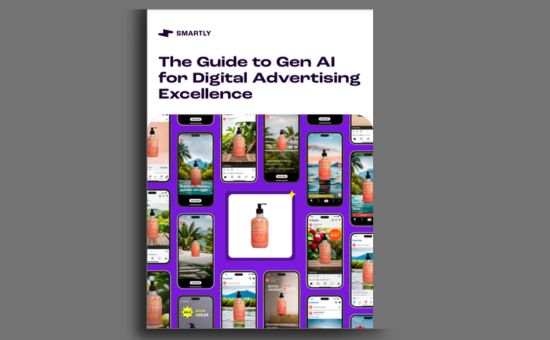Types of Digital Ad Technology | Adobe Experience Cloud
Digital Advertising
THE AD TECHNOLOGY LANDSCAPE
Identifying and segmenting audiences, along with managing the ad publishing process, is a key component of any digital advertising strategy. Advertising technology, or ad tech, has elevated this process to a whole new level. There’s a lot to consider when it comes to digital advertising, and you might wonder, “How can I manage it all?” Fortunately, there are numerous technologies designed specifically to optimize and automate digital advertising efforts.
Adtech includes all the technical software solutions and services used for the delivery, display, targeting, and management of digital ads. But why is it so crucial? With ad tech, marketers can deliver the right ad, with the right message, to the right person—boosting brand awareness and driving sales.
As digital advertising has become increasingly complex, various types of ad technologies (and numerous ad tech companies globally) now make up the digital advertising ecosystem. These companies range from ad agencies and media buying platforms to ad networks and publishers, covering all aspects of the digital advertising landscape.
To better understand this landscape, here’s an illustration from LUMA Partners:
The LUMAscape outlines the digital advertising process, showing how the marketer creates an ad and then navigates through a network of ad tech companies, where it is bought and sold. It ultimately reaches the publisher, who displays the ad. The final step is when the targeted consumer engages with the ad online.
This process might seem complicated, so to make it easier, we will explore some of the key types of ad technologies in this section.

MAIN TYPES OF AD TECHNOLOGIES
The maze of ad tech companies can seem complex, but it doesn’t have to be. Let’s break it down by looking at the key players:
Data Management Platforms (DMPs)
A data management platform (DMP) is a centralized system where vast amounts of data are collected, organized, and managed. Essentially, a DMP is a massive data repository that gathers, sorts and presents information in a way that helps marketers make informed decisions about when and how to engage with specific customers. This is crucial for audience segmentation.
To simplify, Infinitive describes DMPs as:
- Digital data warehouses
- Customer/audience repositories
- Digital marketing hubs
DMPs and Audience Segmentation
DMPs are more than just databases; they manage various types of information and use it primarily to create audience segments. Since audience segmentation is the starting point for developing a digital advertising strategy, this functionality is essential. It enables advertisers to target specific customers with their digital ads, effectively spreading their message and brand.
DMPs bring together the entire digital advertising process by centralizing campaign data, audience information, and media buying activities in one place. This makes them invaluable for executing digital advertising strategies.
DMPs support various marketing functions, and audience segmentation is just one of them. Here are a few others:
Data Integration Capabilities
DMPs can handle data from multiple sources and in various formats, which is crucial when managing today’s multi-channel consumers. Marketers often have data from both online and offline sources, and DMPs integrate this information, making it actionable.
Cookie Pool
Cookies are a critical component of digital advertising. The more cookied users available, the better the chances of matching cookies with other data sources as more information is integrated into the DMP. A strong DMP has access to a large pool of cookies and includes a standard process for refreshing and removing outdated cookies, ensuring marketers have up-to-date information.
Marketing Ecosystem Functionality
DMPs play a central role in the digital advertising ecosystem. They integrate with marketing automation tools and technologies, offering a comprehensive digital advertising solution that supports campaigns and customers across all channels. DMPs enhance the use of audience data in the following areas:
- Demand-side platforms (DSPs)
- Website personalization tools
- Marketing automation tools
- Improved customer e-commerce experiences
Collecting actionable data is essential for automating various marketing processes. The more comprehensive and valuable the data you gather, the more likely your future marketing efforts will yield positive ROI.
Discover the different types of digital ad technology and learn how they can enhance your advertising strategy. Download Adobe’s guide now!
- TYPES OF DIGITAL AD TECHNOLOGY
- THE AD TECHNOLOGY LANDSCAPE
- MAIN TYPES OF AD TECHNOLOGIES
- Data Management Platforms (DMPs)
- Demand-Side Platforms (DSPs)
- Ad Networks
- Supply-Side Platforms (SSPs)
- Ad Exchanges
Number of Pages:
- 6 pages
Pricing:
- Free
Warning: Undefined array key "sidebar_ads" in /home/dmc/public_html/wp-content/themes/DMC/functions/helpers.php on line 824






